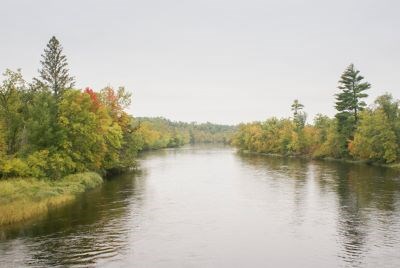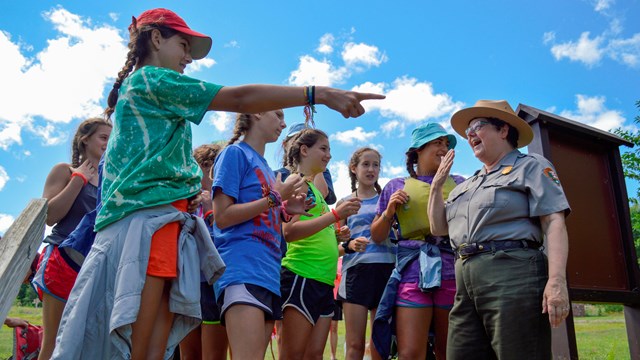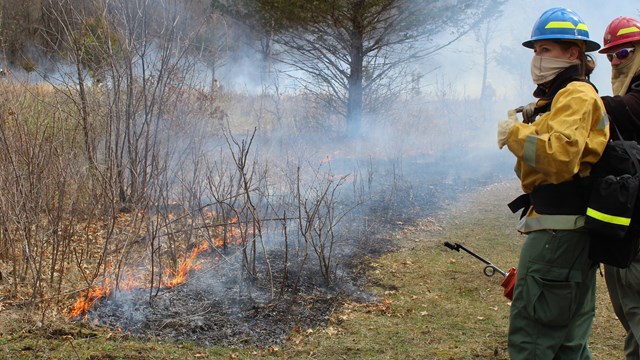
NPS / Van Tatenhove The Wildland Fire Management team works to manage wildfire at Saint Croix National Scenic Riverway by responding to unplanned fires and planning and managing planned ignitions. Both efforts ensure the safety and health of area resources, wildlife, communities, and people. OverviewThe St. Croix National Scenic Riverway is approximate 250 miles long running form Cable WI to Prescot WI. Throughout its length, it crosses numerous different ecosystems and fire environments. The southern portion of the Riverway is dominated by moist hardwood forests containing red oak, American elm, ash, maple and basswood. Wildfires in this forest type are rare, approximately every 500 years, generally only occurring after blowdown events, such as tornadoes or straight-line winds from severe thunderstorm. Fires in this environment were extremely hot and killed all aboveground plants. The site was then revegetated from wind blown seed of from seed surviving in the ground. News and MediaNews about the wildland fire program at Saint Croix National Scenic Riverway can be found on the park's news releases page. Media inquiries can be forwarded to the park's Public Affairs office. 
Prevention and Education
Learn about how you can help prevent the start and spread of dangerous wildfire at Saint Croix National Scenic Riverway. 
Wildland Fire Program (NPS)
Link to the National Park Service's wildland fire program
These park units include: Sleeping Bear Dunes National Lakeshore, Lincoln Boyhood National Memorial, Pictured Rocks National Lakeshore, St Croix National Scenic Riverway, George Rogers Clark National Historic Park, Lincoln Home National Historic Site, Ronald Reagan Boyhood Home National Historic Site, Pullman National Monument, River Raisin National Battlefield Park, Ice Age National Scenic Trail, North Country National Scenic Trail, and the Mississippi National River Recreation Area. |
Last updated: September 10, 2021
